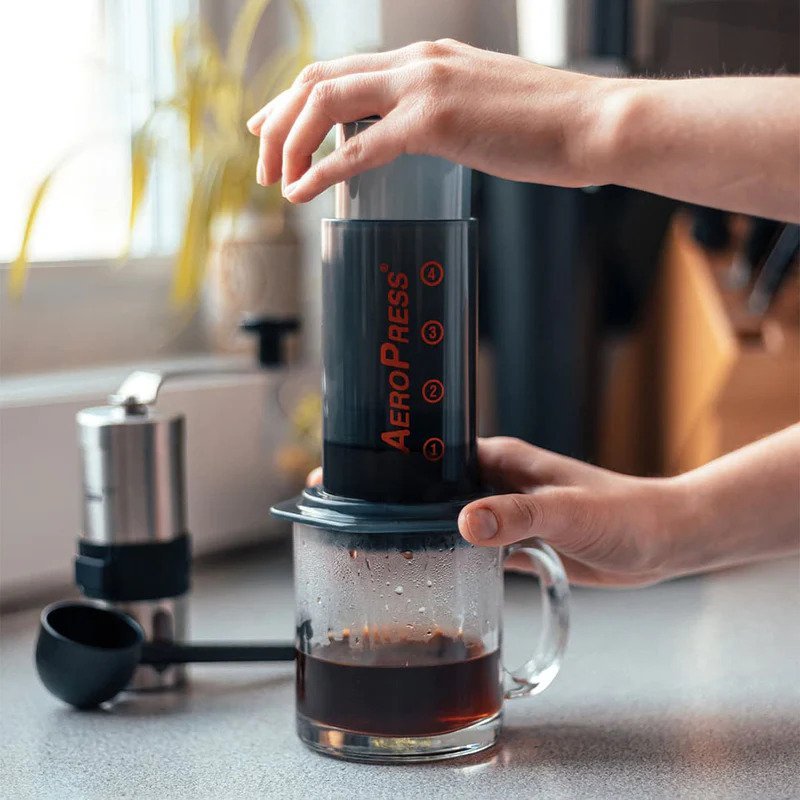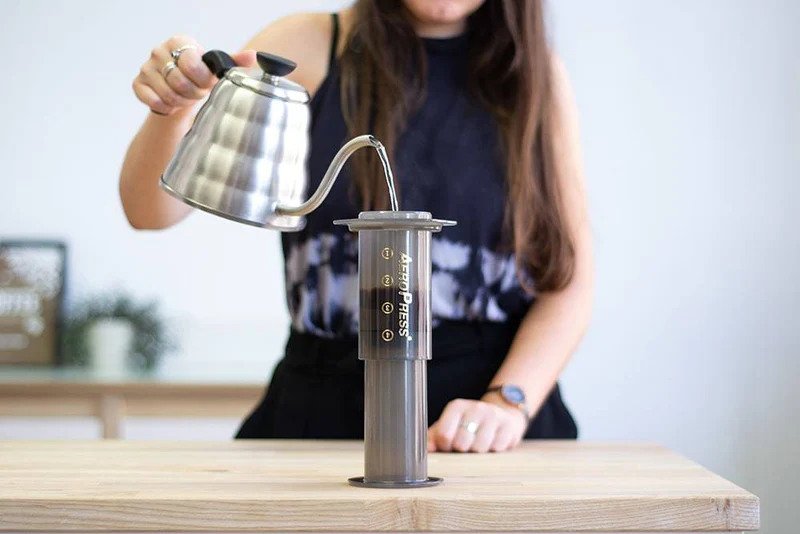Aeropress is a clever coffee-making tool, invented by American engineer Alan Adler, has revolutionized the way we brew coffee at home and in cafes. It’s a story of how a simple idea – filtering coffee under pressure – led to richer, more vibrant flavors.
The Invention of the Aeropress
Alan Adler and his wife, in their quest for a better cup of coffee, experimented with traditional American filter coffee. They found that applying pressure during the brewing process enhanced the coffee’s flavor, leading to the birth of the Aeropress around the year 2005.
Resembling a large syringe, the Aeropress consists of a cylindrical chamber and a plunger. It’s designed to extract coffee by pushing hot water through grounds at high pressure, using a paper filter to ensure a clean, sediment-free cup.

Why the Aeropress Stands Out
What sets the Aeropress apart is its ability to let you play with pressure. This pressure, which you apply manually, allows for a wide range of grind sizes and brewing styles. Whether you prefer a fine or coarse grind, the Aeropress adapts to your taste.
Now Aeropress is available in two types – classic and Aeropress Go. The design of the second one is more compact – the device itself is smaller, and its accessories are folded inside the Aeropress, then into a cup and closed with a rubber lid. I myself have long been the owner of the Go version, as I travel a lot, and it is one of the best portable methods of brewing coffee, with the exception, perhaps, of drip bags.

For home use, any of the Aeropress versions will suit you, so focus on your taste in choosing a device.
Aeropress Brewing Guide
There are a couple of popular methods to brew with the Aeropress: the inverted method, where you flip the device after brewing, and the direct method, where you brew it upright. Both methods have their own charm and result in distinct flavors and body in the coffee. Each technique influences the extraction and flavor profile differently.
The Inverted Method
- Preparation: Insert the plunger into the chamber in an upside-down position.
- Coffee Measurement: Add 15-18 grams of medium-fine ground coffee.
- Water Addition: Pour in 200 ml of water at about 85-90°C.
- Brewing Duration: Steep for 1-2 minutes, depending on your taste preference.
- The Flip and Press: Carefully flip the Aeropress and press down to extract the coffee into a cup.
The Direct Method
- Setup: Assemble the Aeropress in the standard upright position.
- Coffee-to-Water Ratio: Use a similar ratio of coffee to water as the inverted method.
- Brewing Process: After adding the water, press down on the plunger gently, ideally over a period of 30 seconds to 1 minute.
The Art of Aeropress Customization
- Coffee-to-Water Ratio: A good baseline is 60 grams of coffee per liter of water. For the Aeropress’s 200 ml capacity, this means about 12 grams of coffee.
- Grind Size Variability: A finer grind is recommended for quick press methods, while coarser grinds suit longer steep times.
- Water Temperature Ranges: Typically, 85-96°C, but can be adjusted for personal taste. Lower temperatures yield smoother, less acidic brews, while higher temperatures extract more bitterness and strength.
Crafting Your Ideal Cup
- Brewing Time: Play with the brewing time from 1 minute for a lighter cup to 2 minutes for a stronger brew.
- Pressure Application: Experiment with different pressures while pressing. A slower press can result in a more nuanced flavor extraction.
- Tweaking Recipes: Don’t hesitate to adjust the coffee amount, water volume, and brewing time to explore various flavor profiles.
Conclusion
The Aeropress is not just a coffee maker; it’s a gateway to a world of rich, diverse coffee experiences. Its versatility appeals to all coffee lovers, inviting you to experiment and refine your brewing skills. Whether a beginner or an experienced barista, the Aeropress offers an enjoyable and rewarding way to explore the art of coffee.



Leave a Reply